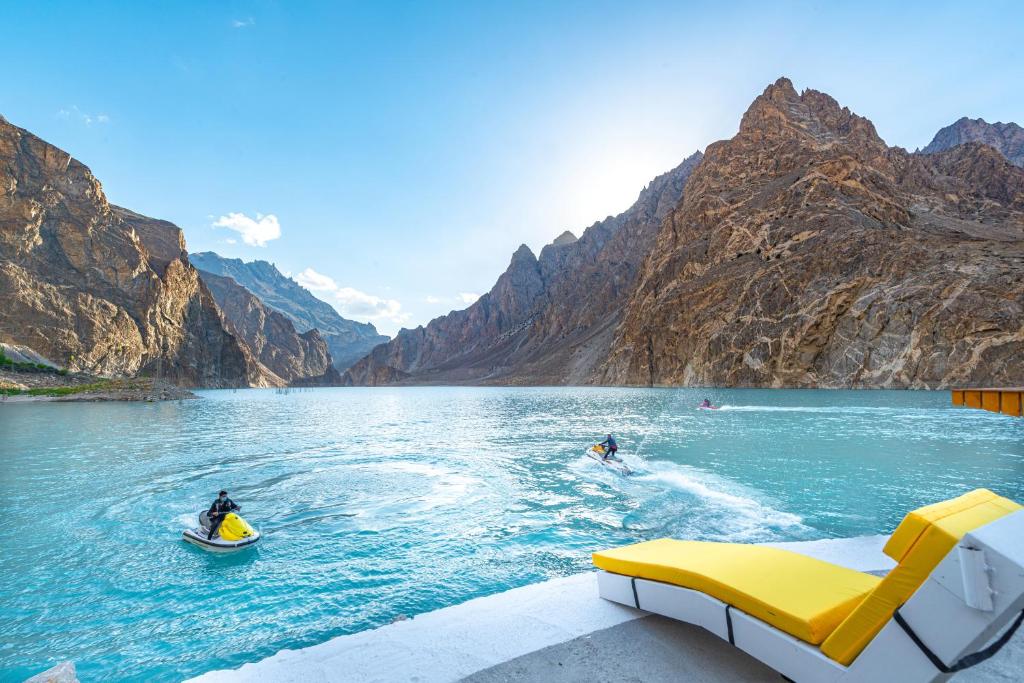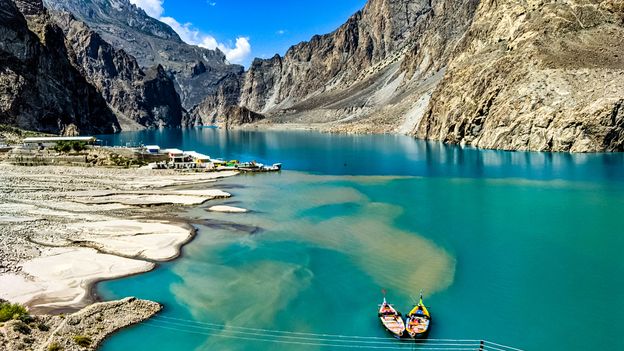
The stunning turquoise waters of Attabad Lake stretching 21 kilometers through Hunza Valley
In the heart of Pakistan's majestic Hunza Valley lies one of nature's most extraordinary accidents – Attabad Lake. This stunning turquoise gem wasn't carved by glaciers over millennia or formed by ancient geological processes. Instead, it's one of the world's youngest major lakes, born from a catastrophic landslide on January 4, 2010, that transformed tragedy into breathtaking beauty.
The 2010 Attabad Landslide: How the Lake Formed
The story of Attabad Lake formation begins on a fateful winter morning when the peaceful village of Attabad in Hunza Valley was struck by a massive landslide. At approximately 9:30 AM, this geological disaster would forever alter the region's geography and create what is now known as Pakistan's most photographed lake.
The Landslide That Created Attabad Lake
The landslide displaced approximately 124 million cubic meters of rock and debris, creating a natural dam 124 meters high and completely blocking the Hunza River. This massive barrier measured 2.5 kilometers long and 1 kilometer wide.

The massive landslide debris that blocked the Hunza River, creating the natural dam for Attabad Lake
The immediate aftermath was devastating. Twenty lives were lost, entire villages were buried, and over 6,000 people were displaced. The landslide also severed the vital Karakoram Highway, cutting off upper Hunza from the rest of Pakistan.
Attabad Lake Formation Timeline
What happened next was both terrifying and miraculous. As the Hunza River continued to flow, water began accumulating behind the massive debris dam, gradually creating what would become Attabad Lake.
Massive landslide strikes Attabad village, creating natural dam and blocking Hunza River
Water accumulates behind debris dam, lake begins forming and expanding
Lake reaches critical levels, threatening downstream flooding
Controlled spillway construction to manage water levels
Lake stabilizes and becomes major tourist attraction in Hunza Valley
Attabad Lake Facts and Figures

Visitors enjoying boat rides on the crystal-clear turquoise waters of Attabad Lake
Why Visit Attabad Lake: Top Reasons
1. Stunning Turquoise Waters
The lake's mesmerizing turquoise color comes from fine glacial sediments suspended in the water. This creates an almost otherworldly appearance that changes with light throughout the day, making it a photographer's paradise.
2. Unique Geological Story
As one of the world's youngest major lakes, Attabad Lake offers visitors a rare opportunity to witness recent geological history. It's a living example of how natural disasters can reshape landscapes.
3. Adventure Activities
- Boat rides across the pristine waters
- Jet skiing and water sports
- Photography tours
- Camping along the shoreline
- Fishing (with proper permits)
4. Gateway to Upper Hunza
The lake serves as a scenic gateway to upper Hunza Valley. The boat journey has become an integral part of the travel experience, offering unique perspectives of surrounding peaks including Rakaposhi and Ultar Sar.

Attabad Lake surrounded by the majestic peaks of the Karakoram mountain range
Attabad Lake Travel Guide: Planning Your Visit
Best Time to Visit
April to October: Ideal weather with clear skies. Peak season is June-August with warmest temperatures but more crowds.
How to Reach
From Gilgit: 2.5 hours drive via Karakoram Highway
From Islamabad: 12-14 hours drive or fly to Gilgit
Photography Tips
Visit during golden hour for dramatic lighting. Morning waters provide perfect reflections. Use turquoise-brown contrast for striking shots.
What to Pack
Warm clothing, sunscreen, sunglasses, camera with extra batteries, comfortable shoes, and cash (limited ATMs available).
Attabad Lake Travel Information
The lake is accessible year-round via the Karakoram Highway. Boat services operate from April to October. Several guesthouses and hotels now operate around the lake. Book accommodations in advance during peak season (June-August).
Attabad Lake Tourism Impact
While the 2010 landslide initially brought devastation, Attabad Lake has ultimately become a source of opportunity for local communities. The tragedy that displaced thousands has been transformed into a tourism asset providing livelihoods for many.
Local entrepreneurs have established boat services, guesthouses, restaurants, and tour operations. This transformation showcases the remarkable resilience of the Hunza people and their ability to adapt and thrive.

Local communities have developed thriving tourism services around Attabad Lake
Sustainable Tourism at Attabad Lake
As Attabad Lake continues attracting visitors worldwide, conservation efforts are crucial to preserve its pristine beauty. Local authorities and communities work together to implement sustainable tourism practices including:
- Water quality monitoring and ecosystem protection
- Visitor number management during peak seasons
- Environmental responsibility education for tourists
- Sustainable tourism development guidelines